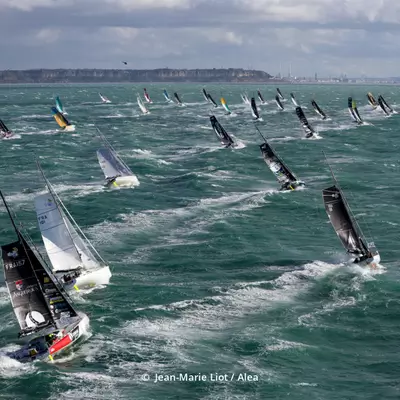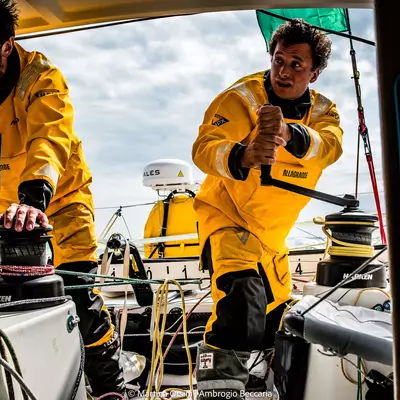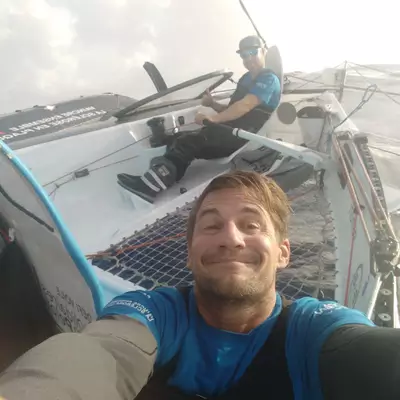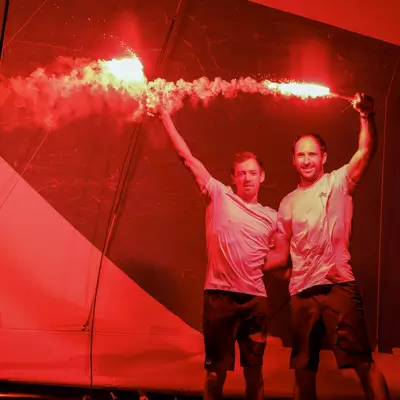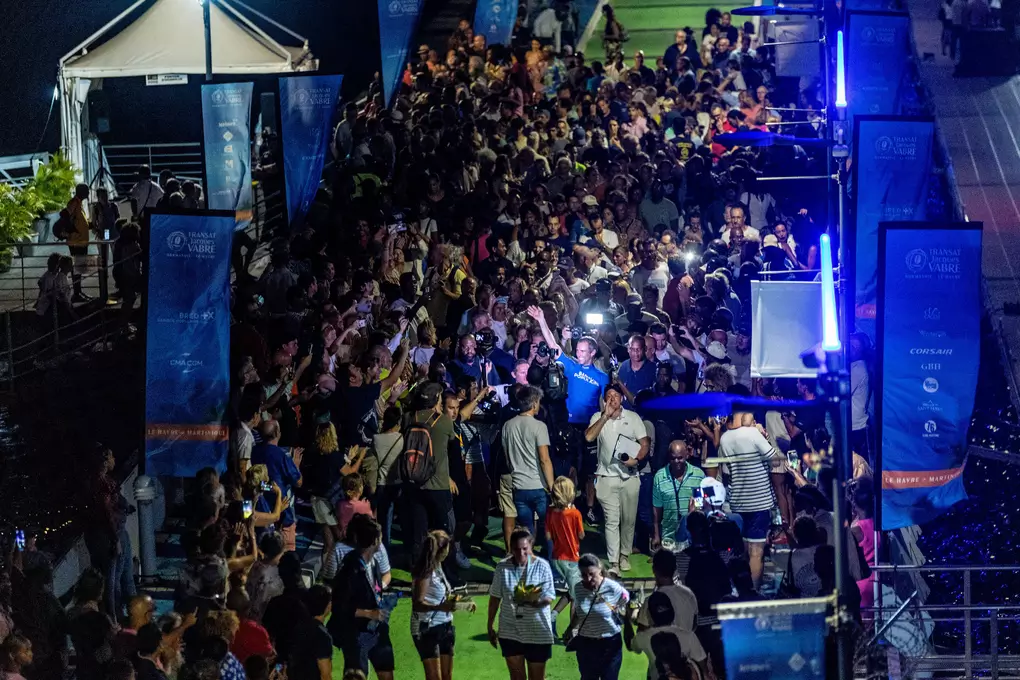On 29th October, the date that was initially scheduled for the start, only the ULTIM, Ocean Fifty multihulls and Class40 monohulls, a total of 55 boats set off in turn on the big day in Seine Bay. All three starts offered us some incredible pictures confirming just how spectacular this event is, the aim always being to stress the diversity and unique qualities of each class. The ULTIM trimarans and Ocean Fifty multihulls set off at full speed. The 32m long boats took off in strong winds that favoured flying. The second group resembling go-karts dug their floats into the spray and foam. As for the Class40 boats,they set off grouped together at the start of their Transat Jacques Vabre Normandie Le Havre. In spite of two incidents with boats coming into contact at the buoy, the tone was set and from the outset, the quantity and quality was obvious with an orderly start for this transatlantic race.
#1 - Starts: two starts for some and postponement for others
Among the boats at the start, only the ULTIM relying on their huge speed potential were able to get away fast enough to from the coast with all its dangers given the context of this low-pressure system. These maxi-trimarans set off on their 7500-mile course via a long dive south around Ascension Island in the Southern Hemisphere. This group of five boats promised a top class race across the Atlantic.



